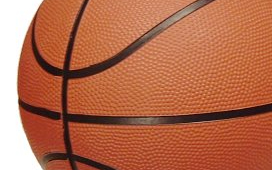Guest Columns
The WNBA Needs to Gamble Big on Caitlin Clark

Caitlin Clark isn’t the best player in the WNBA — going purely by the numbers, she’s perhaps the league’s fifth or sixth best guard — but there’s no denying she’s the most marketable. In a league where revenues lag significantly behind the men’s NBA, Clark represents a player of Larry Bird or Magic Johnson-grade star power, a magical, money-making character whose appeal transcends the usual metrics of success on the court.
Clark was all-time leading scorer in NCAA women’s basketball
Clark, the NCAA’s all-time leading scorer, failed repeatedly to bring a national championship to the University of Iowa. When it mattered most, she played more like BYU great Jimmer Fredette than NBA Hall of Famer Michael Jordan. While the full extent of her on-court prowess remains up for debate, it’s her off-court earning power that makes her invaluable to the WNBA. The WNBA should leverage her star power to boost the league’s visibility and profitability — even altering the rules to make the pro league’s hard fouls a thing of the past.
Consider the perspective of Las Vegas Aces star A’ja Wilson, a woman with a genuine claim to being the WNBA’s best player: she acknowledges Clark’s popularity but attributes some of it to race. This isn’t entirely without merit in a society where marketers often favor white athletes. Yet, such an awkward dynamic can be harnessed to elevate the entire league, including genuine stars like Wilson. By focusing on Clark, the WNBA can increase its overall marketability, benefiting all players. Clark’s impact is already evident; she helped secure $21 million in annual chartered flights for a league with a total salary base of only $18 million. Clark’s generational talent for market influence can uplift the earnings and visibility of other players.
The WNBA must evolve
The WNBA needs to evolve, embracing Clark’s soft style and the excitement she brings. The league should be tailored to her strengths — her smooth stroke with the WNBA’s smaller ball, her court vision — creating a more dynamic and engaging product out of what is often, in all fairness, a rather clunky and unpleasant sport to watch. This approach isn’t about sidelining other players but about using Clark’s marketability to draw more eyes to the sport. When marketed correctly, the league should be a 24/7 advertisement for loads of easy spot-up buckets, as well as a one-stop-shop for sports betting, tapping into the lucrative world of proposition bets and interactive viewing experiences.
Women’s sports often face comparisons to their male counterparts, but this isn’t always fair or relevant. For instance, women’s diving and gymnastics are often seen as superior to the men’s versions. However, when it comes to basketball, the WNBA is frequently criticized for its quality of play compared to the NBA. This disparity is highlighted by Andy Roddick Beat Me With a Frying Pan author Todd Gallagher’s discussion of how he, with only high school basketball experience, managed to crush a WNBA player, Natalie Nakase, in one-on-one competition:
We were both point guards and there was not an enormous spread in skill, but the fact that I was 9 inches taller and 60 pounds heavier made for a total mismatch. This physical advantage allowed me to block almost any shot she took, grab every rebound, and shoot over her.
Gallagher’s advantage in height and weight made it a mismatch, hammering home the significant physical disparity that is frequently pointed out by critics of the WNBA and papered over by its proponents.
Less exciting gameplay
The reality is that the WNBA’s gameplay is less exciting, with far fewer dunks and high-flying plays that characterize the NBA (by contrast, other women’s sports, like gymnastics and diving, are far more watchable than their male equivalents). This perception affects viewership and revenue. However, Clark’s unique style — her shooting range, her precision with the smaller ball — can help bridge this gap, particularly if the refs become far more generous with foul calls. Shooting is, after all, where many of the players can hold their own: “If they [the WNBA] had an all-star team that practiced, I think they could be competitive on a low Division I level,” sneaker executive Sonny Vaccaro remarked years ago. Of course, that would only be true if they played with the women’s ball, because the men’s ball “is bigger and harder to shoot with.”
Sports betting presents another massive opportunity for the WNBA. The league should look to the NBA’s BetCast presentations and take them further. Imagine a game in which the screen is filled almost entirely with Caitlin-related prop bets and minimal gameplay footage — how many threes will Clark hit, will she outscore the opposing team’s top player, how many assists will she rack up? This level of engagement can turn an already-existing audience of inveterate gamblers into habitual spectators, driving up viewership and revenue in the process.
A player like Clark can elevate the league
This isn’t about diminishing the achievements of other players, many of whom are better than Clark. It’s about recognizing the potential of a star like Clark to elevate the entire league. By focusing most of its attention on her, the WNBA can draw in more fans, generate more revenue, and ultimately benefit all its players. This strategy isn’t new — it’s how the NBA of the 1980s turned Jordan, Bird, and Johnson into global icons, raising the league’s profile in the process and erasing memories of the brawling, drug-fueled, and exceedingly low-rent antics of the athletes from the preceding decade.
Some critics have argued that focusing on Clark isn’t beneficial for the WNBA as a whole. The argument is that such a focus makes other players feel undervalued and disrespected. This sentiment is understandable but misses the bigger picture. Clark’s marketability isn’t about overshadowing her teammates; it’s a rising tide that will lift all ships, akin to the WWF elevating Hulk Hogan above everyone else in the 1980s and boosting all of its wrestling salaries nearly fivefold in the process.
Strength or weakness?
Moreover, the physical nature of the WNBA, often highlighted as a strength, can be seen as a weakness. Yes, the league’s players are tough, resilient, and capable of enduring the same rigors as their male counterparts. Clark’s struggles in this environment are detracting from her appeal. The WNBA should shy away from its physicality, instead prioritizing a more wide-open, free-flowing game. The NBA itself has become far less sluggish than it was decades ago, enabling softer European players with skills analogous to Clark’s to thrive alongside tougher American competitors.
There’s also the argument that focusing on marketability undermines respect for the game. This is a narrow view. Marketability and respect are not mutually exclusive. By promoting players like Clark, the league can garner more respect from a wider audience. It’s about creating stars who can draw in fans, which in turn elevates the entire league.
The New York Liberty, themselves elevated by a pair of white players in Sabrina Ionescu and Breanna Stewart — neither of whom is anywhere near as good as A’ja Wilson, whose Aces stomped them in the WNBA Finals last year — recently enjoyed just such a moment in the sun, generating a bit of media-exaggerated buzz about the WNBA becoming a true major league.
WNBA not exactly a moneymaker
However, despite this brief and extremely localized surge in popularity, the financial reality of the WNBA remains sobering. In 2023, the league’s total revenue was approximately $180 million for 12 teams. This figure, while an improvement over previous years, pales in comparison to other professional sports leagues. For context, a single Canadian Football League (CFL) team in that 9-team league, the Winnipeg Blue Bombers, reported $45 million in revenue in 2022 and a profit of $5 million. This means that one CFL team, in a league far less prominent than the NFL, generates about one-fourth of the entire WNBA’s revenue.
This disparity underscores the challenges the WNBA faces in achieving financial sustainability and growth. The Liberty’s moment of increased visibility, powered by Ionescu and Stewart but brought down to earth by Wilson’s leveling greatness, demonstrates that there is potential for the league to draw significant attention and generate excitement. Still, the financial gap between the WNBA and another third-rate league like the CFL highlights the need for innovative strategies to boost revenue.
Given these stark financial realities, the WNBA must capitalize on every opportunity to increase its revenue streams. Caitlin Clark represents the league’s last, best hope for the big money. While the Liberty’s rise showed what can happen when certain kinds of star players pique the public’s interest, the hype machine behind Clark offers a more sustained and widespread potential, which could finally help the likes of A’ja Wilson earn the money their ability warrants.
Realities of marketing
It’s not the most elegant approach, but marketing is a brute-force business. Joe Namath wasn’t the best NFL quarterback by any means, but the fact that he was simultaneously good-looking and able to win a Super Bowl with the New York Jets — a young, untested team in the NFL’s biggest market — helped ensure the success of the NFL’s decision to merge with the AFL. Over time, his success meant big paydays for everybody else, including genuine generational talents like Orlando Pace and Reggie White.
The league should lean into Clark’s popularity while it still can, promoting her extensively and babying her on the court to draw in new fans and sponsors. By doing so, the WNBA can create a ripple effect, increasing overall visibility and interest in the league. This strategy isn’t about overshadowing players like Wilson or the Dallas Wings’ Arike Ogunbowale but about leveraging the one undeniable asset the league has to create broader financial stability.
Clark can lead the WNBA beyond cloning the NBA
If the WNBA is to grow and thrive over the next decade, it can’t settle for being a poor clone of the NBA but instead must forge its own path to success. For now, Clark is the star who will have to trailblaze that path. By embracing sports betting and creating a dynamic viewing and gameplay experience centered around boosting Clark’s talents and hiding her limitations, the WNBA can carve out its niche in the sports world. She’s no Michael Jordan or Tom Brady, but, like Hulk Hogan or Joe Namath, she is a larger-than-life character who can be molded into something greater than the sum of her parts — a golden goose capable of laying an infinite supply of golden eggs, ensuring that even the players griping about her overexposure get theirs before they get got.
This article was originally published by RealClearBooks and made available via RealClearWire.
Oliver Bateman is a historian and journalist based in Pittsburgh. He blogs, vlogs, and podcasts at his Substack, Oliver Bateman Does the Work.
-

 Civilization4 days ago
Civilization4 days agoTrump’s Venezuela Gamble and America’s Shifting National Security Strategy
-

 Civilization4 days ago
Civilization4 days agoOperation Absolute Resolve: Anatomy of a Modern Decapitation Strike
-

 Civilization4 days ago
Civilization4 days agoTen Reasons To Cheer the Arrest of Maduro
-

 Civilization2 days ago
Civilization2 days agoOne Fell Swoop: Lawsuit Eyes Death Blow to Racial Preferences
-

 Civilization13 hours ago
Civilization13 hours agoTrump’s New Doctrine of Precision Deterrence
-

 Executive2 days ago
Executive2 days agoWaste of the Day: $1.6T in Wasteful Spending in Rand Paul’s “Festivus” Report
-

 Civilization4 days ago
Civilization4 days agoTrump’s New Executive Order on Space Has the Right Stuff
-

 Guest Columns3 days ago
Guest Columns3 days agoAdvice to Democrats Regarding Maduro Arrest: Resist Reflexive Opposition














